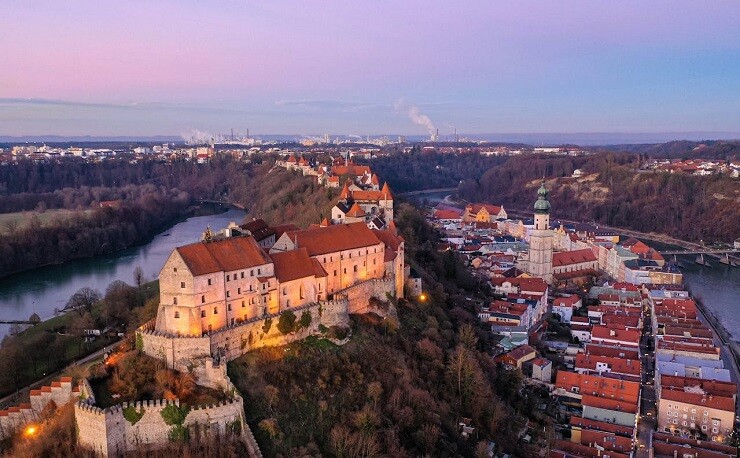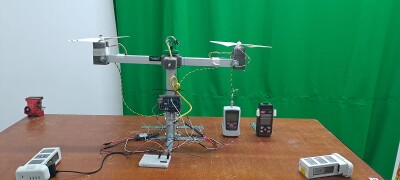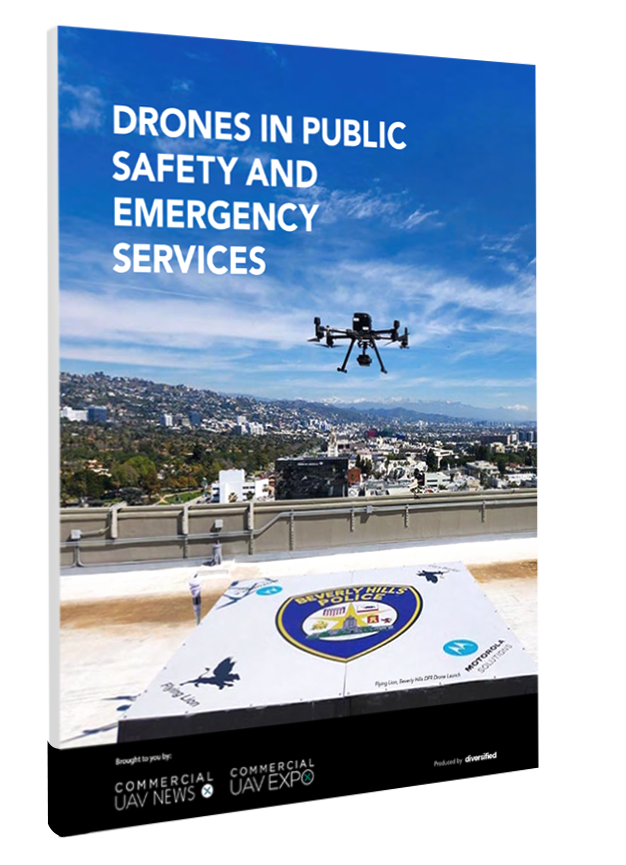According to a market study from Germany’s Association of Unmanned Aviation (VUL), the German commercial drone market was valued at €893M in 2023, ranking it the fourth largest commercial drone market after China, the US, and Japan. Furthermore, also in 2023, the proportion of commercially used drones increased by 197 percent since 2019 to 56,400 drones. By 2023, there’s an expected growth from €955M to over €1.7B, which corresponds to an average annual growth rate of 7.5 percent.
In this article, we will explore how drones are being utilized within Germany, and highlight how they are reshaping traditional processes, making them more cost-effective, and responsive to real-world challenges.
Improving claims adjustment processes
In Germany, hailstorms are very common and often leave adjusters with the difficult task of entering flooded buildings or accessing difficult roofs. Also, the major events department has difficulties assessing damaged buildings on behalf of their industrial customers. Versicherungskammer, a Munich-based insurance company, investigated the use of drones to solve these problems and get away from the multiple man-hours and financial support that damaged building assessments require.
In a partnership with FairFleet, a drone service provider, Versicherungskammer assessed an industrial plant and several other buildings that were seriously damaged by hailstorms during a four-week period. By collecting several drone pictures of the damage, the insurer allowed claims adjusters to refrain from going to the property themselves. Instead, analyzing the high aerial quality images in a safe location not only saved significant amounts of time but also provided better insights. Moreover, the use of drones helped Versicherungskammer avoid a time and cost-intensive, iterative ‘cleaning’ of the damaged property to adhere to security standards for on-site visits.
In the end, the company was able to make the claims process more efficient and more transparent for their customers.
Performing a Highway Aerial Mapping
TS Engineering, a surveying and civil engineering design service provider in Germany, was tasked with mapping a 9km corridor section of the A8 highway in southern Germany with a maximum vertical deviation of only 0.8 inches. To avoid road closures, traffic disruption, and time-consuming processes, TS Engineering chose a DJI M300 equipped with a TrueView 535 3D Imaging System over traditional methods.
By placing 99 ground control points dispersed along and near the highway and performing drone flights at a maximum altitude of 60 meters AGL, the company captured millions of points and detailed terrain data. The collected data included essential details like road layouts, markings, guardrails, drainage systems, and external areas with embankments, enabling it to serve as the foundation for current as-built plans for a future six-lane expansion of the highway.
Automated inventory in high-bay warehouses and outdoor block stores
Based in Kassel, Germany, DB Schenker, a logistics division of German rail operator Deutsche Bahn, wanted to innovate the monitoring of stocks in their warehouse. To that end, the company selected doks. to make warehouse management simple by using drones to create digital twins and automate as well as digitalize warehouses and carry out inventory recording processes.
“The product helps us to keep our inventories at a high level and to optimize accuracy in the warehouse. Another advantage of this is the recording function, which allows you to take a direct look at the storage location without being there.” Jens Dombrowski, Operations Manager at DB Schenker, said. “With doks., we can also drive outside of business hours. In the operational business, we immediately noticed the changes, since employees could be deployed in the value-adding process.”
Digital Twins Save Lives
Every minute counts in case of an emergency. In the regular day-to-day business of authorities and organizations with security tasks (BOS), efficient operational planning is decisive for saving human lives. That’s why engineering service providers develop optimized fire and disaster protection concepts that support BOS in their operational planning.
With a vision to make future cities safer and easier to plan through intelligent concepts, hhpberlin, a German fire protection pioneer, recognized the enormous potential that drones and digital twins bring to the table. However, the reason behind the need for digital twins isn’t for the typical construction project lifecycle, or to perform inspections. Instead, hhpberlin uses them to plan and implement security concepts, providing emergency services and authorities with the local conditions in advance.
To start off the company’s journey of generating digital twins for the approximately 20,000 buildings it is responsible for, hhpberlin used FlyNex, a drone mapping software, to capture the Berlin exhibition center. By collecting high-quality aerial photo data in a single 45-minute drone flight, hhpberlin was able to generate a digital twin with an accuracy of a few millimeters. With this information, BOS can quickly and reliably get a comprehensive picture of the situation in an emergency and derive targeted measures, saving time and human lives.
“Thanks to the FlyNex platform, we can now digitize fire and disaster control on a large scale,” said Stefan Truthän, CEO at hhpberlin. “The Berlin trade fair is the ideal test object to illustrate the added value of digital twins and automated flight routes. The models give emergency troops a reliable overview and can derive suitable measures quickly.”
Want more insights on UAVs Across Europe?
Commercial UAV Expo Europe will bring the commercial UAS ecosystem together. The event will serve as the pivotal platform for commercial drone professionals across Europe to explore, connect, and innovate within the rapidly evolving world of UAS.
















Comments